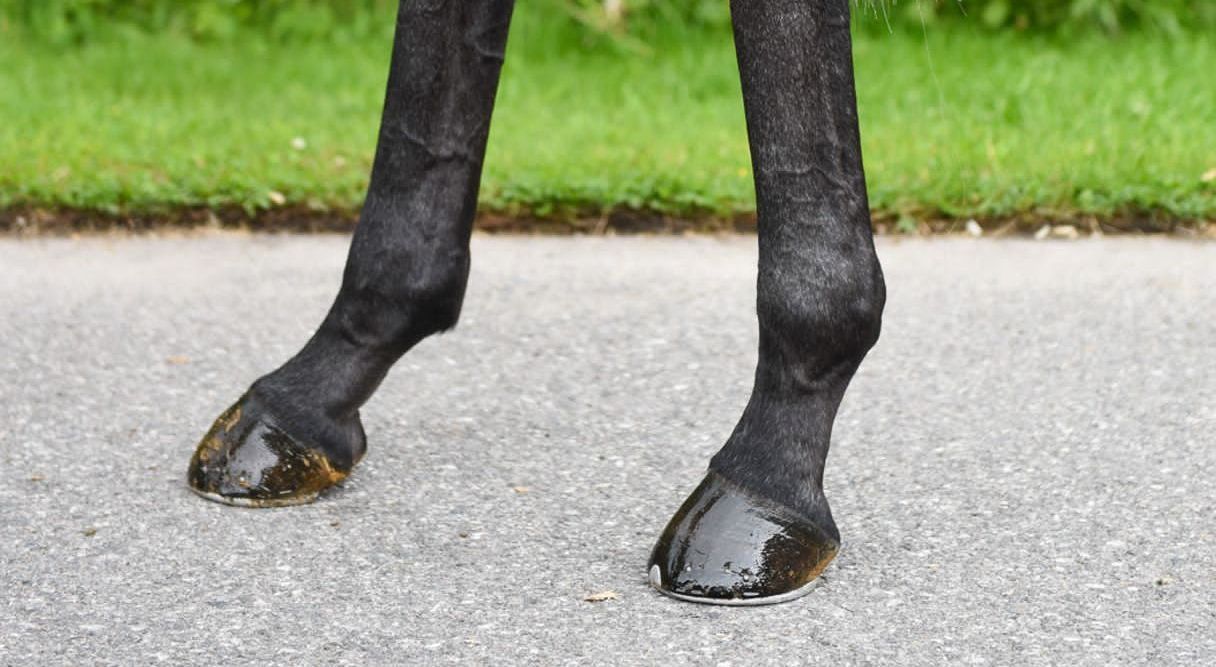555-555-5555
mymail@mailservice.com
A Closer Look at Causes, Symptoms, and Treatment of hoof abscesses in horses

Horse owners and caretakers are all too familiar with the sight of a limping, uncomfortable horse suddenly struck down by lameness.
Often, this condition can be attributed to a hoof abscess—a painful but treatable ailment that affects horses of all breeds and disciplines. Understanding what causes hoof abscesses, how to recognize the symptoms, and the best treatment options available can make a significant difference in managing this common equine health issue.
What Causes Hoof Abscesses?
Hoof abscesses typically originate from a bacterial infection that finds its way into the sensitive tissues of the hoof. Bacteria, such as Streptococcus and Staphylococcus, can enter through small openings in the hoof wall or sole, which may result from:
- Puncture wounds: Objects like stones, nails, or even sharp debris can penetrate the hoof, providing a pathway for bacteria to invade.
- Cracked hooves: Inadequate hoof care, irregular trimming, or dry weather conditions can lead to cracks in the hoof wall, allowing bacteria to enter.
- Softening of the hoof: Prolonged exposure to wet or muddy conditions can soften the hoof, making it more vulnerable to bacterial penetration.
Recognizing Symptoms of Hoof Abscesses:
The signs of a hoof abscess can vary, but common symptoms include:
- Lameness: A sudden onset of severe lameness is often the first noticeable sign, with the horse reluctant to put weight on the affected hoof.
- Increased digital pulse: Palpating the digital pulse at the fetlock joint may reveal a stronger pulse than usual on the affected limb.
- Heat and swelling: The hoof may feel warm to the touch, and there might be localized swelling around the coronary band or in the lower limb.
- Pain reaction: Horses with hoof abscesses often react strongly to pressure applied to the affected area.
- Discharge: In some cases, a visible discharge of pus may occur at the coronary band or through a tract in the sole.
Diagnosis and Treatment:
Diagnosing a hoof abscess typically involves a combination of physical examination and hoof testing:
- Physical examination: A veterinarian or farrier will assess the horse’s gait, examine the hoof for signs of inflammation or swelling, and palpate the hoof to identify areas of sensitivity.
- Hoof testing: Using hoof testers, a tool designed to apply pressure to specific areas of the hoof, helps pinpoint the exact location of the abscess.
- Radiography: In more complicated cases or when the abscess is not easily located, X-rays may be used to visualize the internal structures of the hoof.
Treatment Options:
Once diagnosed, the treatment of a hoof abscess aims to relieve pain, eliminate infection, and promote healing:
- Hoof soaking: Soaking the affected hoof in warm Epsom salt water or a specialized hoof soaking solution can help draw out infection and provide pain relief.
- Hoof poultices: Applying a poultice containing drawing agents like ichthammol can encourage the abscess to burst and drain, relieving pressure and speeding up recovery.
- Antibiotics: In severe cases where infection has spread, oral or intravenous antibiotics may be necessary to combat bacterial infection.
- Pain management: Non-steroidal anti-inflammatory drugs (NSAIDs) may be prescribed to alleviate pain and reduce inflammation.
- Corrective shoeing: A skilled farrier may need to trim the hoof to relieve pressure and provide support or apply a specialized shoe to protect the affected area.
Prevention Tips:
While not all hoof abscesses can be prevented, there are steps horse owners can take to reduce the risk:
- Regular hoof care: Maintain a consistent schedule of trimming and balancing the hooves to prevent cracks and uneven wear.
- Clean environment: Keep stalls and turnout areas clean and dry to minimize exposure to bacteria.
- Monitor hoof health: Check hooves regularly for signs of injury, cracks, or other abnormalities that could lead to infection.
Understanding the causes, recognizing early symptoms, and promptly treating hoof abscesses are essential for ensuring the health and well-being of horses. By staying vigilant and proactive, horse owners can effectively manage this common equine ailment and keep their equine partners happy and healthy for years to come.
Contact Us
We will get back to you as soon as possible.
Please try again later.
Latest News





PO BOX 208 Rutherford NSW, 2320 Australia
Office: 1300 964 797
Luke Murrell: 0407 451 823
Jamie Lovett: 0409 270 980

